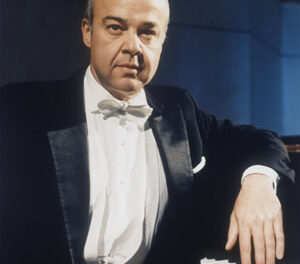The Cape Fear Chorale concluded its 2010-11 season with two works that were different in a way one might not have expected. The first, brief piece was “Misericordias Domini,” KV 222 by Mozart. It is a severe, serious work, whose character might surprise the listener reading its text: “I will sing for ever of the Lord’s mercies.” In its gravity, contrapuntal elaboration, and dark key of D minor, it is strongly suggestive of the fugue that ends the first and last movements of Mozart’s Requiem, his final creation.
Conducted by the group’s director, Jerry Cribbs, the performance featured clarity in the articulation of the vocal and chamber orchestra lines. More variety of dynamics and dramatic direction would have added to the impact. There was an oddity, too, in the program notes where use of the words “charm” and “joyful” almost seemed to have been written about a different piece.
The main work on the program was in fact a requiem, but this elicited far more consolation than the Mozart preceding it. The seven-movement Requiem, sung in a mixture of Latin and English, is one of the more popular compositions by the British composer John Rutter. The orchestra used for this performance would ideally have been bigger. Balanced against the 10 or so other instruments and full chorus were only a quintet of strings, which resulted in the strings often not being heard with any strength.
The opening was appropriately dark, with drum beats and somber orchestral colors. The middle section then turned to Rutter’s characteristic movie-type sound, expressive but perhaps odd in a religious piece. At the end of the movement, the opening motive returns, with a last open chord which was beautifully sustained by the chorus. As with the Mozart, entrances were clear and precise, and phrases well-shaped – a real strength – but dramatic high points could have been more pronounced. Mr. Cribbs’ beat had a restrained quality at points where the sound opens out into larger peaks.
The second movement allowed the cello to emerge out of the orchestra for a dark solo, expressively played by David Meyer. The overall somber character of this psalm setting was captured well; Mr. Cribbs excels in eliciting sustained moods. The choral sound was rich and full.
In the third movement, Pie Jesu, alto Ashley Kvitko sang the solo part beautifully, with a clear, ringing and expressive tone. Only the endings of lines could have stood refinement; these tended to have rather sharp cut-offs, instead of the voice floating off in a more gradual descent.
The following Sanctus, the central affirmation of faith in the work, was bright in tone, with attractive use of the glockenspiel. Like the Pie Jesu, the sound was redolent of film music, an appealing popular sound but perhaps at odds with a text that begins “holy, holy, holy.” The rhythmic character of the music did not seem fully matched in the energy of the conductor’s beat.
The Agnus Dei recalled the opening sound of the work, with an expressive pleading quality. The sixth movement, a setting of the famous Psalm “The Lord is my Shepherd” was gently tender, featuring a cantilena oboe obbligato. The following Lux Aeterna was a moving conclusion. Elements of the opening merged into light, upper-range sounds, suggesting the transition from Earth to Heaven accompanied by a choir of angels. At the very end, the music of the first movement returned, quietly embracing, in a way beyond words, the cycle of death and life, the elegy of an ending bringing forth the wonder of a new beginning. Ashley Kvitko was featured in another fine solo, and along with evocative singing by the chorus, brought the concert to a gentle and uplifting conclusion.












